Japanese anime is more popular now than it has ever been before. These interviews with anime studios will reveal the behind-the-scenes processes and emotions that go into making anime. This is a large-scale project done in collaboration with anime news sites throughout the world, such as the anime news site Anime!Anime!, Tokyo Otaku Mode, which has 20 million fans on Facebook, the huge Chinese sites Bahamut and Manrenzhi, and more.
You can find all the interviews here.
******************************************
Company Profile
Craftar, a film consulting company from Hakuhodo DY Group, was established as an animation studio in August 2017. Using its distinctive “smart CG animation” as its greatest weapon, the studio has created many high-quality anime movies and TV series, such as Ashita Sekai ga Owaru Toshitemo, Ingress: The Animation, Osomatsu-san VR, Garo: Vanishing Line, Drifters, and others. Along with AR and VR, they have had much success with image-heavy animations. They have collaborated with international companies, had their VR films screened in movie theaters, and developed initiatives that go beyond conventional wisdom. They advocate “creating anime starting from how it is created” and are actively expanding their horizons.
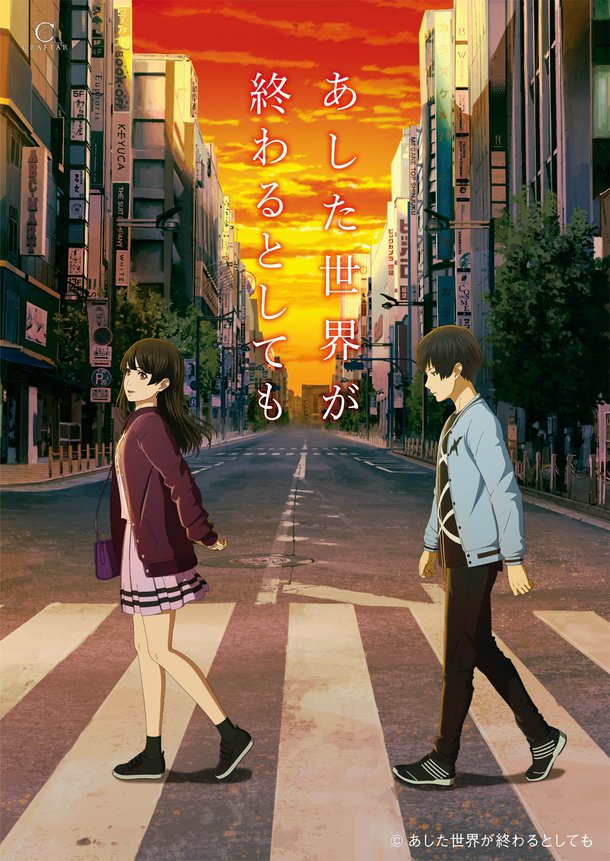
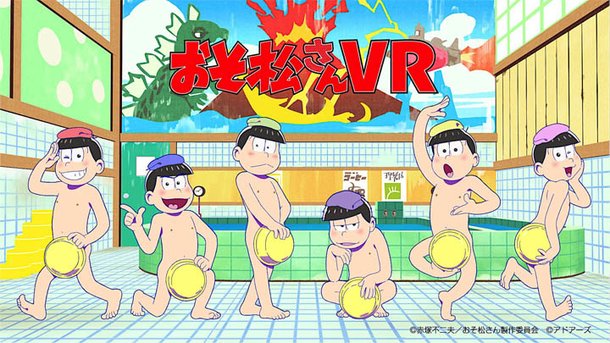
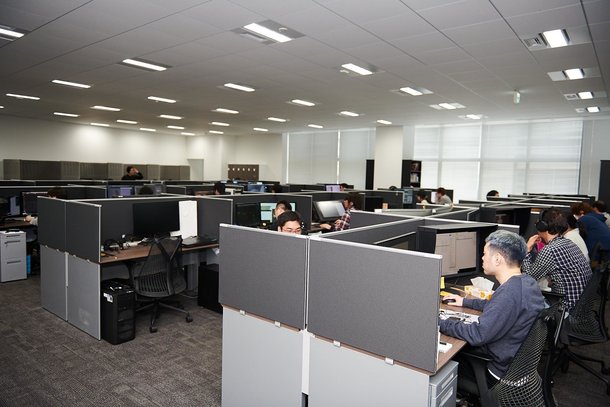
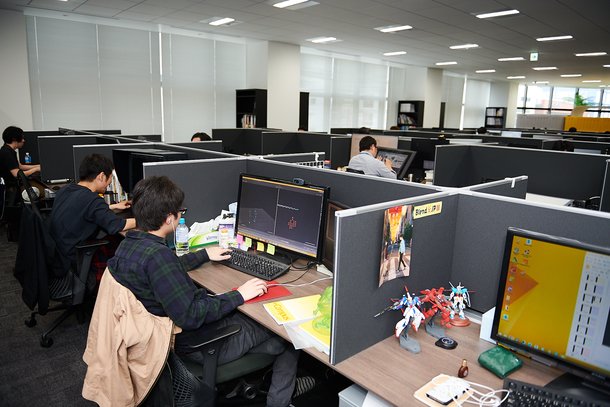
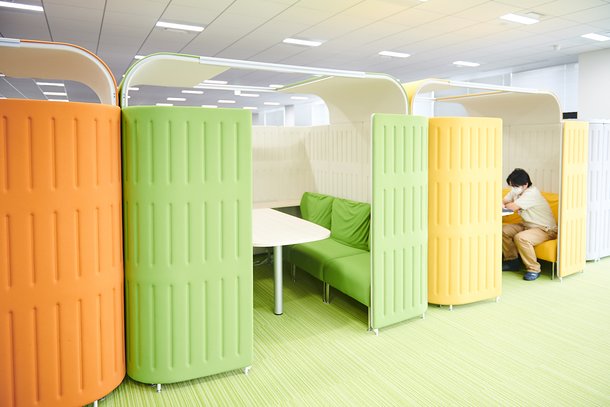
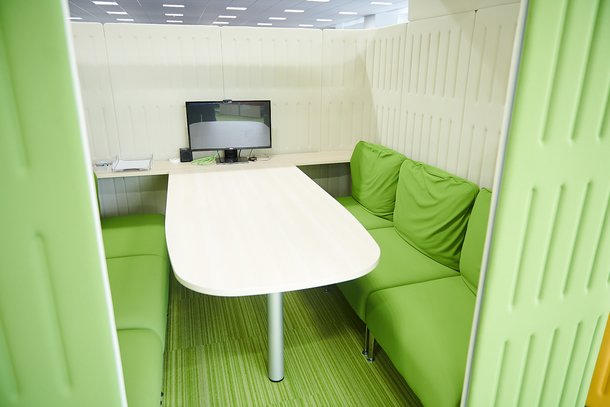
Craftar Studios continues to evolve with its “smart CG animation,” a unique technique that incorporates the latest IT techniques such as AI and real time engineering. They are expanding the world of fully digital anime with works such as Ashita Sekai ga Owaru Toshitemo and Ingress: The Animation, which is based off a game by Niantic, Inc., the company that developed and manages Pokemon GO. But what kind of studio is Craftar Studios? What are the creators’ goals for the future? We asked anime director Yuhei Sakuragi and managing director Hidenori Kawashima.
[Interview/composition = Mayuko Takagi]
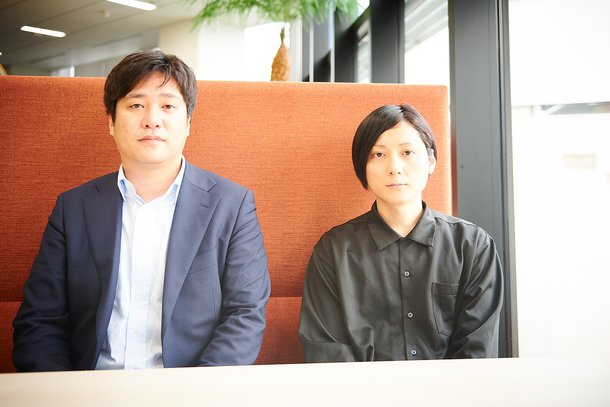
- Please tell us about the history of Craftar Studios.
Kawashima: At first there were two different companies: Craftar, which produced anime and commercials, and Lucky Pictures, which subcontracted animation. Craftar’s CEO, Mr. Furuta, and I agreed that we wanted to seriously create Japanese creative works for the world. At the same time, we worked together with Director Sakuragi and Producer Tomohiko Ishii on a project and expanded with a merger and acquisition. Then Craftar Studios was created in Shinjuku, which is the destination of all information media and film companies.
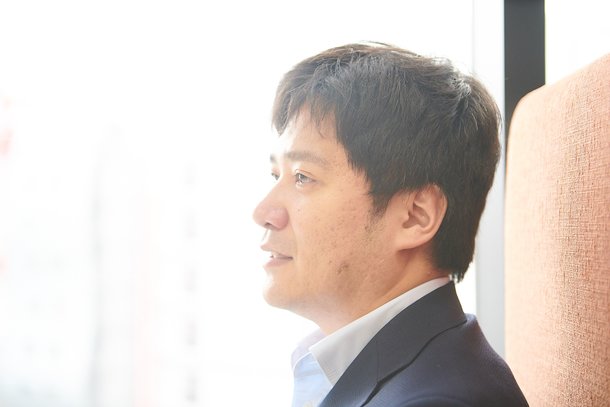
- What are Craftar Studios’s strengths?
Kawashima: I definitely think it’s our staff. Director Sakuragi is in charge of a company-wide system that allows us to create original works. We have hired many talented designers and staff that have been drawing for a long time, as well as many generalists, a term for those who combine a diverse number of specialties.
For example, we have a different definition of “quality” than an engineer might. That’s why we can’t reach an agreement unless we include people with a wide range of knowledge, such as those well-versed in programming or designing. It’s hard to finish a movie or series on a tight schedule of one or two years unless you can work together to complete something.
However, we have staff who can act as in-betweens, so as a studio we have a perfect balance of specialties, diversity, and management capabilities.
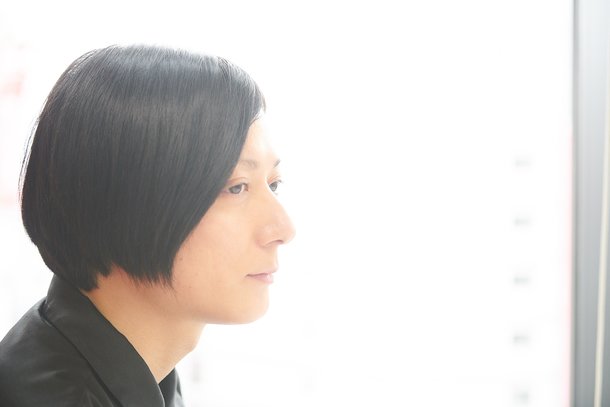
- How is the company organized and how do you educate young animators?
Sakuragi: We employ about 40 people, which is on the low side for producing major works as a studio. I want to have everyone to have skills at the directing level. In general, we educate so that everyone in the studio knows what happens in every step of the process so they can take command of any part of a work at any time. That is part of the reason we all work on the same floor. I want them to see what the director is doing and have meetings together as much as possible. I want all of them to be able to create a series on their own.
Kawashima: I think it’s necessary to create an environment in which the staff can have a positive mentality and enjoy the act of creating content. I believe that creating VR, commercials, and collaborating with other industries to create content other than just anime gives animators the ability to learn from other industries and actively work to become excellent creators. By continuing those acts, both individuals and the studio itself will gain greater techniques.

- Please explain the studio’s mottos of “creating anime starting from how it is created” and “creating everything with everyone.”
Kawashima: Our approach is to dig deep into how we are going to make a piece of work and consider each and every technique beforehand. However, we’re not doing anything reckless or eccentric. We just want to maintain our current quality while taking approaches that change slowly over time while actively adopting AI and other new technology to challenge ourselves in innovative ways. It’s important to maintain a stance of agreeing with all new technological advances without getting tied up in existing workflows.
By continually committing to technology, calculations that wouldn’t have been made if we had done things the same way all along will continue to come up. That is a good thing. We are professionals at creating anime, but of course we aren’t professionals in anything else.
When it comes to challenging anime production by using new technology not found in the traditional anime industry, proactively engaging with people in fields and industries other than your own allows for the creation of even greater advanced animation.
From the position of our parent company, Craftar, we have connections that other anime companies have been unable to make. Proactively engaging with companies in other industries, such as Unity and Preferred Networks, is one of Craftar Studios’s characteristics and strengths.
- Do you have any foreign staff? Also, what would you look for if you were to hire more animators?
Sakuragi: We don’t at the moment, but the software is the same, so as long as they have the skills they could probably do the same work. Even if they can’t speak Japanese, that gives us a chance to practice our English, so I think it would be a good opportunity (laughs).
Kawashima: Only if I can get an English teacher (laughs). It’s true that if English were to become the official language of our studio, we’d be able to take on global work.
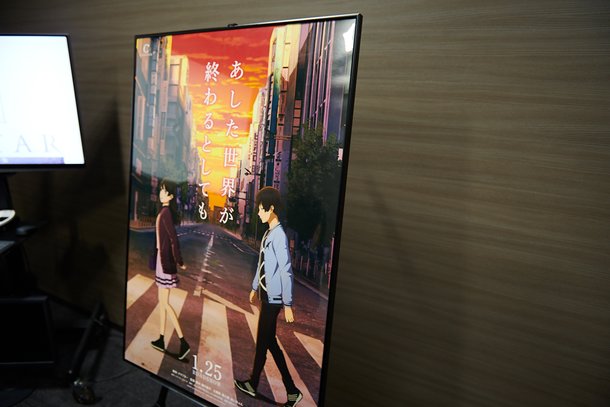
- Ashita Sekai ga Owaru Toshitemo (directed by Yuhei Sakuragi/2019) was nominated for the Annecy International Animation Film Festival. When making the film, were there any parts you wanted international fans to pay attention to?
Sakuragi: When making Ashita Sekai ga Owaru Toshitemo, I thought a lot about how the international crowd would receive it. After all, Ingress, which was broadcast worldwide, was made with character settings and a story that we thought foreign fans would appreciate. However, we and the Niantic staff had different perceptions, so some foreign fans may find a few things strange.
For example, how we used frames. This is also related to why we used motion capturing in Ashita Sekai ga Owaru Toshitemo, but with Ingress, we learned that the affectations of Japanese anime are rarely understood by foreign audiences. When we added slow motion zoom-ins and purposefully deleted frames to make the work more “anime-ish”, the foreign audience genuinely thought we had forgotten to put in the frames.
On the other hand, Japanese people find motion capture to be too smooth and don’t like looking at it, but foreign audiences think it is high quality. Those sort of differences exist. Right now Japanese youth view a lot of different content on the Internet, so I believe their reactions are similar to the reactions from foreign fans.
Our target audience for Ashita Sekai ga Owaru Toshitemo was people around the protagonist’s age, so late teens to early twenties. We changed the pretences from old-fashioned anime to make them smoother so that anyone watching, even foreign audiences, would understand them.
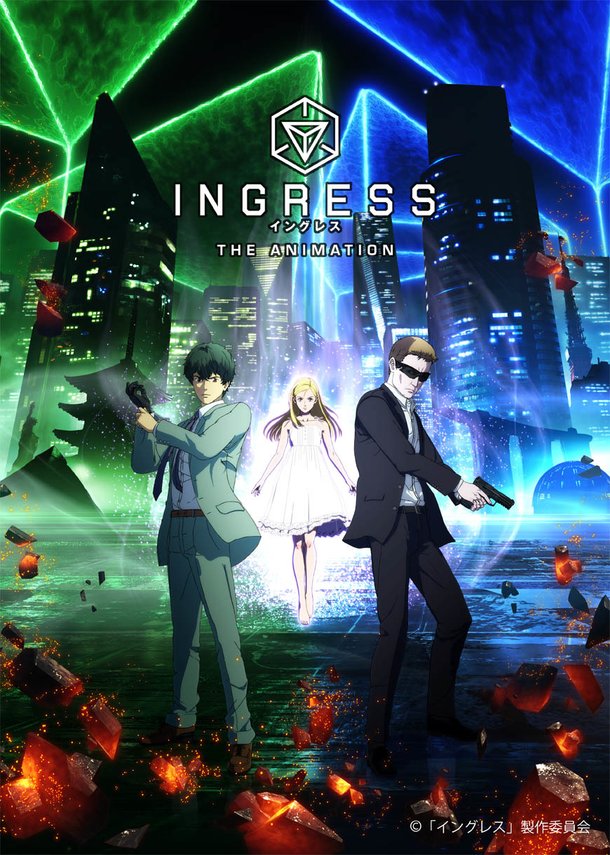
- By the way, are you praised or criticized for different things by Japanese and international fans?
Sakuragi: Our core fans from both within Japan and overseas surprisingly like the same things about our anime. People overseas are used to seeing anime by now. When you go to events like Anime Expo, the series getting the most attention are usually the same series that made an impact with anime-lovers here in Japan. However, I feel like anime is still a small worldwide community. Even though so many people turn up for Anime Expo, that’s only a tiny percent of the world’s population. I feel like people who have never seen Japanese anime before would have a different impression.
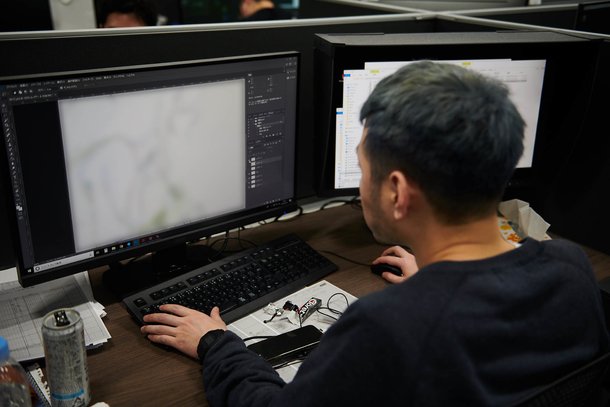
- The CG in Ingress: The Animation and Ashita Sekai ga Owaru Toshitemo was very smooth and I didn’t feel that anything was out of place, like the scenery. Did you take Niantic’s opinions into consideration while creating those parts?
Sakuragi: They didn’t have any particular demands regarding the details of movement or the animation’s quality. I think it’s because our team had skill and experience. We’ve used a technology called “smart CG” for our anime’s look for a long time now, and many of those smart CG animators worked together on Ingress. With Ashita Sekai ga Owaru Toshitemo, we focused more on imagining how we would bring that level of quality into our next phase by doing things like using motion capture or adding new details to the overall look.
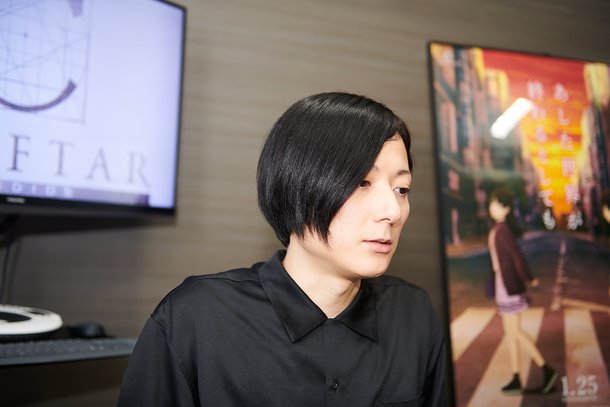
- Including techniques, do you think there are differences between Japan and other countries?
Sakuragi: Definitely with the budget and the number of staff. Japanese studios are nowhere near the scale of large projects overseas. Even with budgets, we’ll be competing in the same arena and have to think of how we will go up against competitors. There are definitely fewer Japanese people in the industry, so we have to focus our most-talented staff on creating works that can compare to foreign works. In this industry, it feels like we excel the more we improve. You can’t win unless you have the best of the best when it comes to Japanese animators.
Kawashima: The most important condition is scale. The amount of work we can take on is different. America and China are major economic powers, so it’s a matter of how much power they have over us, Japan.
It’s no longer a matter of one company going up against overwhelming economic power. It’s all about how you put together your work in the time available. I think that’s the only way to go if we seriously want to compete with foreign companies.
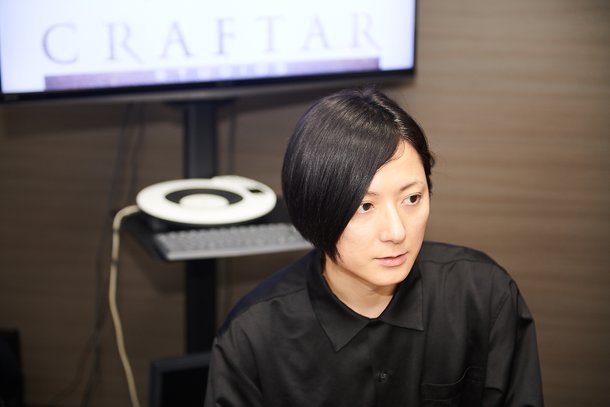
- Are there any other works or directors who have inspired you?
Sakuragi: It’s a secret.
Kawashima: (Laughs) This is pretty standard, but I like Star Wars and Mitsuru Adachi’s works. Being born and raised in Japan in the era I was, it’s impossible to say that I was only influenced by one specific work because I was showered in anime and information. The generation before might have been able to pinpoint a single work, but our generation is different. There were so many hit series, such as Evangelion.
- Whether it’s Japanese or from overseas, what kinds of things do you notice when watching anime?
Sakuragi: Things like layouts and how the cuts are connected. Basically what parts of the film are being connected to create the story. I think this may be one kind of occupational disease. I’m always looking to see how the characters’ expressions and emotions are shown, how they’re acting, and how information is being transmitted to the viewers.
I think things like, “They did this before us,” “I want to try that next time,” and on the other hand, “I don’t think that works well,” or “They could have done a better job.” That is how I observe while watching.
Kawashima: When I watch animation from overseas, I often think about what audience they were targeting. Foreign animation feels like it is digging up the Asian market and the comic market in its country of origin, but that it is not made for viewers who like Japanese anime. It’s obvious when watching something like Spiderman that it wasn’t made for the average anime watcher.
However, I feel that Japanese anime and large-scale animation like that of Hollywood’s Marvel series will increase the population of animation viewers in the future.
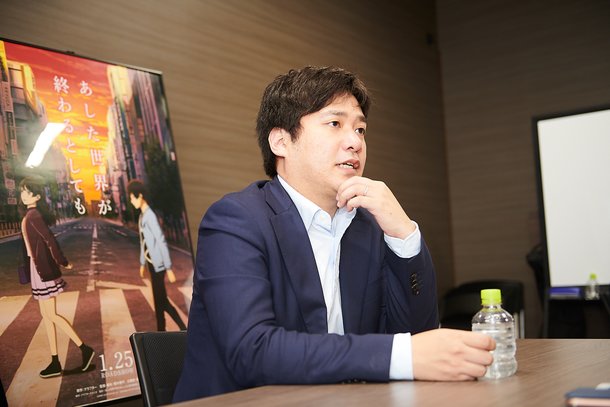
- What do you think about VR?
Kawashima: VR is an extremely powerful tool that can be used to expand the world of anime. And it wouldn’t be an exaggeration to say that Crafter Studios is the anime studio putting the most effort into it here in Japan.
Right now VRCC* has a VR service that allows for simultaneous viewing by multiple users at one time which was used for the virtual entrance ceremony of N High School, made by Kadokawa. VRCC has two interesting points. The first is that you can experience three-dimensional sound like that of a cinema’s and feel completely immersed in the VR. The second is that, although VR previously was poor when it came to simultaneous experiences, Shinjuku’s Wald 9 cinema allows up to 80 people to experience VR simultaneously.
*VCRR: Acronym for VR Cinema Consortium, a joint venture made up of VAIO Corporation, Toei Company, Ltd., and CRAFTAR Inc. that provides an environment for watching VR movies at cinemas
- That’s true. I’ve heard that recently, VR is being used to create characters and even attend cram school classes.
Kawashima: Yes. On the other hand, I think that part of the reason it is doing so well is because of the VR techniques that were cultivated through Japanese animation. In terms of technology, overseas companies are working hard, but the Japanese have better skills when it comes to creating VR characters. There are so many Japanese creators, as you can see from events like Comiket. Along with that inherent creativity, you need a large amount of assets when creating VR, so I believe it will gather more Japanese creators in the future. I also hope that our works made with VR, such as Director Sakuragi’s Natsu wo Yarinaosu, will receive more attention.
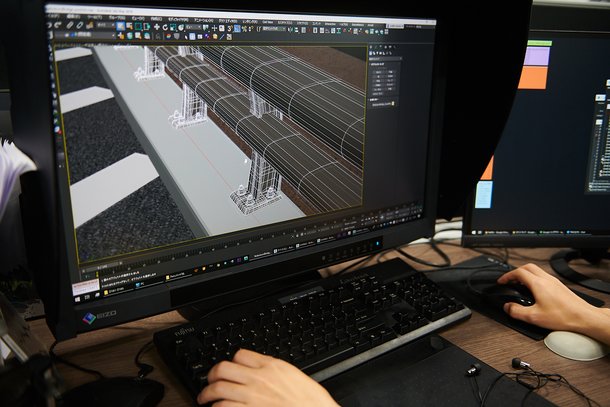
- It is said that with 5G, lag may completely disappear from video games. Are there such predictions or trends you expect to see in the anime field?
Kawashima: Image data itself has not changed from the time it was film. It has always been shown on a screen, so I don’t think it will change from here on out. Considering the flow of 5G and IoT, I think anime will naturally expand to become more realistic, like 2.5D.
Sakuragi: I don’t think the nature of what we’re creating will change, but it will be easier to work with others overseas. I also think that things like movie data being able to be transferred instantaneously has its pros and cons. While work will be able to be displayed in a variety of different media, I feel like the value of each piece of data will go down. For example, we could use 5G to diffuse data that previously could have only been transported using a hard disk. Since we are essentially creating data, I feel that the value of our work will change as the way we handle said data changes.
Kawashima: He’s right. For example, depending on how blockchains become a part of anime, a work-driven system where you cannot view an anime unless you pay first may be created. But an anime we expected many people to view could collect a lot of blockchain revenue, which wouldn’t be such a bad thing (laughs).
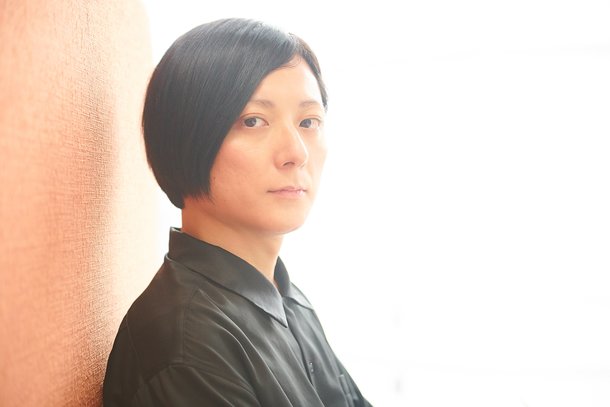
- Both as a studio and as a director, is there a goal for the kind of works you want to create?
Sakuragi: I want to arrange things so I can steadily release works with the quality of each work going up each time. Until now we’ve focused on adding staff and increasing our budget, but I want to create a system that allows us to include expressions we found difficult before now.
We’re a young studio and most of our animators are around 30 years old, so I also want to increase skill levels across the board.
Kawashima: I want Craftar Studios to be the kind of place creators dream of working at, a place that is filled with talented people. I also want to not limit ourselves to AI, but to actively adopt tools like “deep learning” that have not been used in the anime industry until now. We’re currently testing out some technology. However, no matter how good the technology is, we can’t use it until it provides a certain level of quality for us, so it will be a while before we release it.
Sakuragi: Personally, I want to create works that convey the drama of everyday life. Surprisingly enough, I’m not very picky about how I express things. Sometimes things are different, but usually what moves the story along is the characters’ emotions, so I want to make sure that the emotional parts are conveyed.
- Please give a message to your fans overseas.
Sakuragi: Craftar Studios often works alongside companies from overseas and focuses on distributing anime around the world, so please enjoy our works if you have the chance to see them.
We’re currently running a project in which fans who read the interview can participate in which will allow you to send messages of support and gratitude directly to anime studios!
You can only support them through this within the official Otaku Coin app as a project within Otaku Coin, a community currency that Anime! Anime! is also a partner company in planning. Join in on supporting the anime studios after downloading the app.
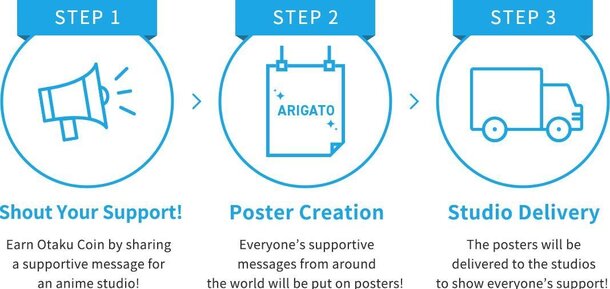
Download the official Otaku Coin app from here!

 Shopping Guide
Shopping Guide


























